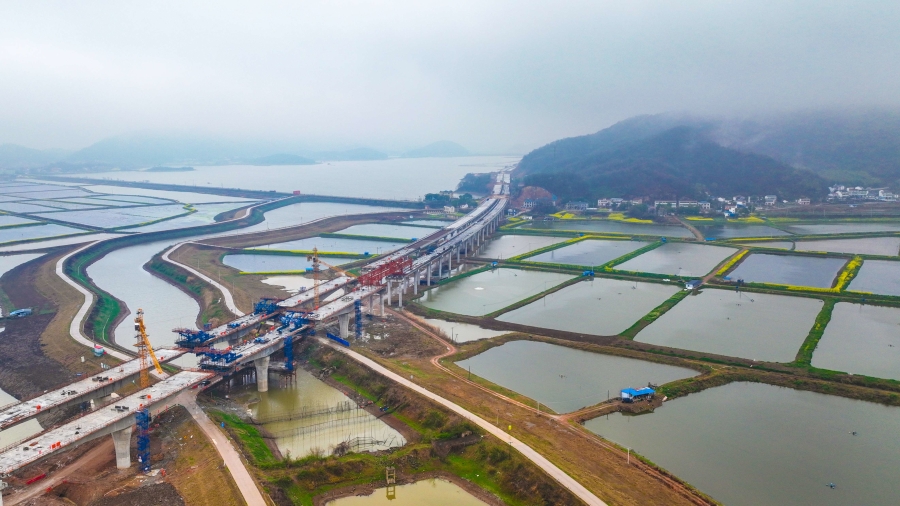|
In the spring of Southern Anhui, the mountains are lush and the machinery roars. Recently, reporters followed the Anhui Transportation Holding Group to the construction sites of expressways in Wuhu and Xuancheng, witnessing a construction surge "racing against time." In the first quarter of the lunar new year, the transportation department aims for a "good start," with 15 ongoing expressway projects completing investments of 4.3 billion yuan. The major projects of the Xuancheng–Jingxian Expressway Phase II, Tianchang-Tianzhushan Expressway, and Wuhu–Xuancheng Expressway expansion are all in full swing, achieving over 70% of their planned investment, injecting strong momentum into the integrated development of the Yangtze River Delta. 
Starting from Jiangzi Village in Jingxian County, crossing National Highway G205, traversing Niuxing Mountain and Qinkeng River, and ultimately connecting to the Wuhu-Huangshan Expressway, the Xuancheng to Jingxian County Expressway Phase II (S36) is now in the countdown to open. This 11.27-kilometer "demonstration road for transportation and tourism integration" encapsulates the millennia-old cultural heritage of Jingxian County, the "Home of Xuan Paper," along with ecological wisdom. "Once the expressway opens, it will enable 'one-hour access' between the city and county of Xuancheng," said the project leader. This "Green Corridor of Southern Anhui" not only connects cultural and tourism sites like Zhaji Ancient Village and Taohuatan but also serves as an important supplement to the Anhui-Jiangxi Corridor, accelerating the "fast entry, slow travel" model for all-in-one tourism. 

As a vital transportation artery for the integration of the Yangtze River Delta, the Wuhu-Xuancheng Expressway Expansion Project has reached a key breakthrough, with plans to achieve full eight-lane traffic by the end of 2025. Recently, at the construction site of the Qingshui River Grand Bridge, the right four lanes have been completed and opened to traffic, while the main pier construction on the left is in full swing. The project innovatively employs a long-span steel box arch bridge with minimal support installation technology, shortening the construction period by 30% and improving precision to the millimeter level. On the north bank of the Yangtze River, the construction of the Tianchang-Tianzhushan Expressway from Wuwei to Anqing is well underway, showing its initial form. This 119-kilometer, bidirectional four-lane expressway acts as a golden key, tightly linking Wuwei, Zongyang, Anqing, and other areas. At the Changhe Grand Bridge, the cantilevered cast-in-place cable-stayed structure resembles a long rainbow, with over 300 workers seizing the good weather for construction. 

As an important component of the North Yangtze River Expressways, once opened, it will establish a new national expressway corridor from Nanjing to Jiujiang, facilitating the integrated development of the Yangtze River Delta. Even more exciting, it will connect the "dead-end roads" in Anqing and Tongling, accelerating the transformation of regional transportation advantages into economic development benefits. Currently, in Southern Anhui, transportation builders are transforming blueprints into thoroughfares with a spirit of "striving" and "seizing opportunities." As three "giant dragons" take flight this year, the beauty of Southern Anhui’s landscapes, thriving industries, and improved livelihoods will extend alongside the expressway network, heading toward a broader future.
Photos provided by Anhui Transportation Holding Group Source: Anhuinews.com
|